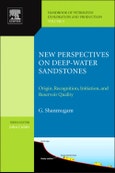This handbook is vital for understanding the origin of deep-water sandstones, emphasizing sandy-mass transport deposits (SMTDs) and bottom-current reworked sands (BCRSs) in petroleum reservoirs. This cutting-edge perspective, a pragmatic alternative to the conventional turbidite concepts, is crucial because the turbidite paradigm is built on a dubious foundation without empirical data on sandy turbidity currents in modern oceans. In the absence of evidence for sandy turbidity currents in natural environments, elegant theoretical models and experimental observations of turbidity currents are irrelevant substitutes for explaining the origin of sandy deposits as "turbidites." In documenting modern and ancient SMTDs (sandy slides, sandy slumps, and sandy debrites) and BCRSs (deposits of thermohaline [contour] currents, wind-driven currents, and tidal currents), the author describes and interprets core and outcrop (1:20 to 1:50 scale) from 35 case studies worldwide (which include 32 petroleum reservoirs), totaling more than 10,000 m in cumulative thickness, carried out during the past 36 years (1974-2010). The book dispels myths about the importance of sea level lowstand and provides much-needed clarity on the triggering of sediment failures by earthquakes, meteorite impacts, tsunamis, and cyclones with implications for the distribution of deep-water sandstone petroleum reservoirs.
Please Note: This is an On Demand product, delivery may take up to 11 working days after payment has been received.








